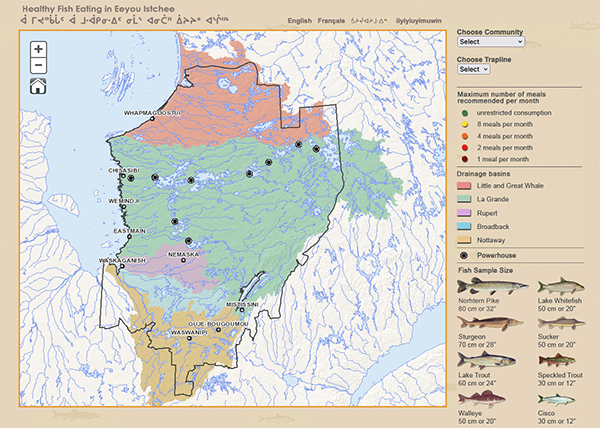


Chemicals remain in the air, water, and soil for long periods. They may originate in the South, and be carried to the North by wind or rain. These chemicals are taken up by plants and tiny creatures
in the water (plankton). From there, they are passed up the food chain to insects, then fish, then birds and animals that eat the fish.
Mercury is another contaminant that is present in the environment.
But unlike other contaminants, the levels in fish increase temporarily in hydro electric reservoirs. Mercury can come from industries in the South, but it also occurs naturally. Because it is
carried by wind and rain, fish all over the world contain at least some mercury.
Fish Consumption Recommendations
Humans get most of their mercury from fish. Anyone who eats fish has some mercury in their body, but the levels are usually low and not harmful to health. However, a fetus is more sensitive to mercury, so pregnant women need to limit how much mercury they take in. In adults, very high doses can damage the nerves and lead to problems with coordination, sight, and hearing. Studies of anglers in Québec have shown that their mercury levels are well below this point. Recent studies show that mercury levels in most Cree are also well below the danger point.
If you eat fish more than once a week, all year round, you should limit your intake of predatory fish (walleye, pike, lake trout, and burbot). The interactive Mercury Levels Map will show the recommended amounts of various species of fish, depending on where they are caught. Colour codes indicate how often you can eat them. For instance, green means the fish is low in mercury, and you can eat as much of it as you want. Red indicates a high-mercury fish that you should eat only once a month. Please note that you should not add the number of meals recommended for each colour group. For example, you can have 8 meals per month of fish indicated by a yellow circle, or 4 meals per month of fish indicated with an orange circle,
but not the sum of both.
For more detailed information consult the guides below and visit the Cree Health Board website.